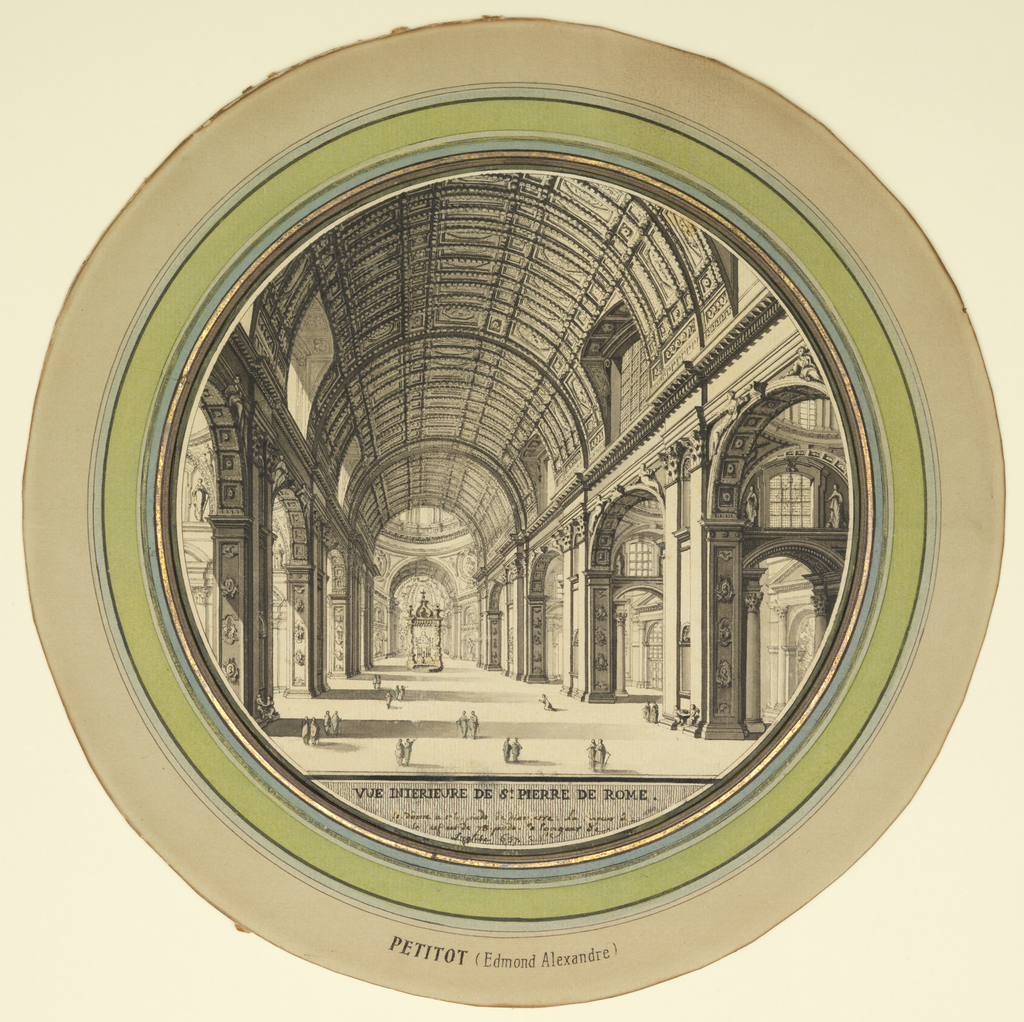This drawing, Interior of St. Peter's in Rome, has been attributed to Enneamond Alexandre Petitot, although it is likely that the drawing is by an unidentified artist working either in the circle of Giovanni Batista Piranesi or the workshop of Giuseppe Vasi, both of whom created scenes of notable monuments in Rome for the tourist trade in the mid eighteenth century. The drawing also bears comparison with the interior view of St. Peter's, Le cardinal Melchior de Polignac visitant Saint Pierre de Rome, painted in 1730 by Giovanni Paolo Pannini, now in the Louvre.
Petitot was a French artist associated with French Academy students active in Rome, in the circle of Piranesi in the 1740s. He began his training in architecture and engineering in his father's workshop in Lyons where he also studied with Jacques Germain Soufflot. He received the grand prix from the Académie Royale d'Architecture in 1745 and then proceeded to study at the French Academy from 1746 to 1750, where he came under the influence of Piranesi. After returning to Paris in 1750, Petitot became a practicing architect and enjoyed the patronage of Filippo of Bourbon, Duke of Parma for whom he designed and built numerous structures and monuments in Parma, as well as designing temporary structures for court festivals. His architectural achievements include the Hunting Lodge at Colorno, the Library of the Palazzo della Pilotta, the façade of the Church of San Pietro, and the Palazzo di Riserva, all in Parma, among others.
From this history, it seems unlikely that Petitot would have produced a drawing of this type after 1750, when his career as a professional architect began. Drawings of this kind, presumably after a published print, were usually produced by students, or members of an artist's workshop, as preparatory exercises to further their understanding of perspective, proportion, and scale. This drawing, in reverse, is close to a published print by Piranesi, etched in 1748-49, entitled Veduta interna della Basilica di St.Pietro in Vaticano. (It is unusual that the proposed drawing does not include the monument to Catherine Sobieski, which was unveiled in 1742.) It is possible that, if this drawing were by Petitot, it could have been produced in the year prior to his return to Paris. The inclusion of staffage (small figures included for scale) is in keeping with views of this kind by Piranesi, Pannini and other artists working at this time. The circular format of this drawing does not resemble other drawings by Petitot, although the tondo format was popular with French contemporaries of Petitot who worked in Italy at the time. There is an inscription in an eighteenth century hand below the image which, when analyzed, may shed additional light on the origins of the drawing.
